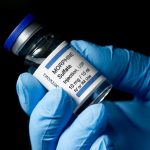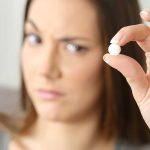- Morphine Withdrawal Syndrome
- Morphine Detox
- Medication-Assisted Treatment
- Morphine Addiction Treatment
Morphine is a prescription opioid analgesic (pain reliever) and controlled substance with a high risk of abuse. Long-term drug use may lead to a physical dependence, which is likely to result in morphine withdrawal symptoms if you stop taking it.
Opioid withdrawal symptoms may not be life-threatening but some people do experience severe symptoms. If you or a loved one is struggling with morphine withdrawal, an inpatient detox program can help you manage unpleasant symptoms with 24/7 care.
Morphine Withdrawal Syndrome
Morphine provides pain relief by attaching to opioid receptors in the brain but it also increases the production of dopamine, a brain chemical associated with pleasure and reward. After long-term use, your brain may stop producing the appropriate levels of dopamine on its own.
Instead, it may rely on frequent doses of morphine to produce dopamine. Over time, you may need higher doses to feel the same effects and if you stop taking morphine, you may experience opiate withdrawal symptoms. Symptoms of opioid withdrawal may begin within hours of the last use and persist for 4-10 days.
Acute withdrawal symptoms may include:
- increased heart rate
- high blood pressure
- impaired concentration
- dilated pupils
- sweating
- goosebumps
- yawning
- watery eyes
- runny nose
- diarrhea
- nausea
- vomiting
- muscle aches
- anxiety
In addition to these initial symptoms, cravings, difficulty sleeping, and mood swings can last for weeks or months. Cravings increase the risk of relapse, which may lead to a life-threatening opioid overdose.
Morphine Detox Program
A medical detox program may be the first step in your addiction treatment plan if you have a morphine dependence. A detox program is an inpatient program with experienced healthcare professionals who monitor your symptoms around the clock.
If you have moderate to severe withdrawal symptoms, you may receive medication for:
- anxiety or blood pressure (clonidine)
- diarrhea (loperamide)
- nausea
- sleep (melatonin)
Detox may last up to a week, depending on your symptoms and overall health. Stabilizing your withdrawal symptoms will help prepare you for an addiction treatment program, whether it involves inpatient or outpatient care.
Medication-Assisted Treatment (MAT) Program
During the detoxification process, you may be introduced to a MAT program, which may be beneficial if you struggle with opioid use disorder (OUD), or opiate addiction.
MAT programs incorporate the use of FDA-approved medications with behavioral therapy to reduce cravings, withdrawal symptoms, and drug abuse.
MAT medications are safe to use long-term, proven effective, and the dose can be adjusted as needed to fit your needs. According to the Substance Abuse and Mental Health Services Administration (SAMHSA), MAT medications include:
Buprenorphine
Buprenorphine is a partial opioid agonist, which means it partially activates opioid receptors in the brain. Although it can produce pleasurable effects, similar to morphine or oxycodone, it is not as powerful as a full opioid agonist.
Buprenorphine can be started 12-24 hours after last use of morphine or 24-48 hours after stopping methadone (a long-acting opioid).
Bupernorphine is also available as a combination drug, known as Suboxone (buprenorphine/naloxone).
Naloxone is an opioid antagonist that blocks the effects of opioids and can produce sudden withdrawal symptoms in the presence of opioids. When used in combination with buprenorphine, naloxone does not cause withdrawal symptoms unless the drug is misused by injection.
Methadone
Methadone is an opioid agonist that fully activates opioid receptors but is unique to other opioids because it has minimal euphoric effects. It is taken daily, during detox or long-term, by attending a clinic that is licensed to dispense methadone.
Although some people begin tapering off methadone during detox, the National Institute On Drug Abuse (NIDA) recommends taking it for at least a year. Methadone can reduce cravings and withdrawal symptoms, which also reduces the risk of relapse and overdose.
Naltrexone
Naltrexone, known by the brand name Vivitrol, is available as a monthly injection to help reduce cravings and drug abuse. Naltrexone is an opioid antagonist that will block opioid receptors, which prevents an opioid “high,” including the euphoric and sedative effects of morphine.
Naltrexone should not be started until at least a week after stopping morphine to avoid severe withdrawal symptoms.
Morphine Addiction Treatment
Over time, opioid dependence can progress into a substance use disorder (SUD), also known as drug addiction. If you develop an opioid addiction, you may need more than a detox program to maintain long-term recovery.
Depending on your individual needs, an inpatient or outpatient addiction treatment program provides varying levels of care and supervision.
At Northeast Addictions Treatment Center, our outpatient programs offer a wide range of services, including behavioral therapy, family therapy, group therapy, and support groups.
If you are struggling with opioid addiction, you are not alone. Please reach out to one of our specialists today to learn more about our treatment options.
Sources
- National Library Of Medicine — 4 Physical Detoxification Services For Withdrawal From Specific Substances
- National Library Of Medicine: StatPearls — Opioid Withdrawal
- Substance Abuse And Mental Health Services Administration (SAMHSA) — Medication-Assisted Treatment (MAT)
- Substance Abuse And Mental Health Services Administration (SAMHSA) — Protracted Withdrawal
Written by
Northeast Addition Editorial Team
©2024 Northeast Addition Center | All Rights Reserved
This page does not provide medical advice.




